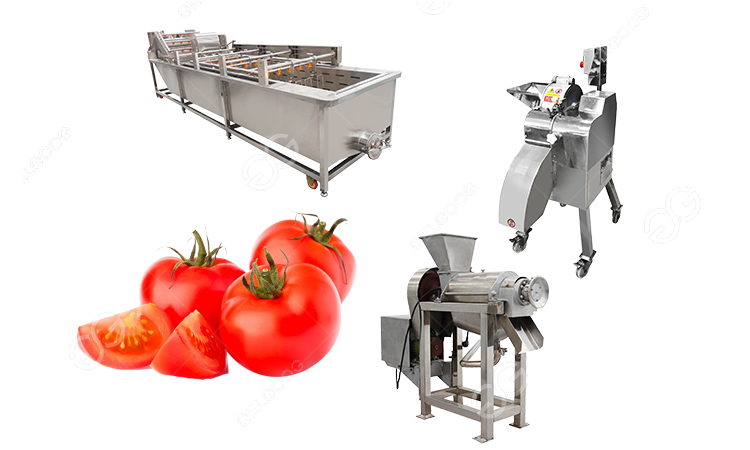How Are Tomatoes Processed in Factory?
Tomatoes are a versatile and widely used ingredient in the culinary world, finding their way into various dishes, from pasta sauces to ketchup. But how are tomatoes processed in factory? The tomato processing process is a fascinating journey that involves several steps, each tailored to produce different finished products. In this article, we will delve into the world of tomato processing and explore the common methods used, including cleaning, peeling, drying, dicing, and beating.

Cleaning: The first step
The journey of a tomato product begins with cleaning. Tomatoes are typically harvested from the fields and arrive at the processing facility covered in dirt and debris. To ensure the highest quality and safety standards, the tomatoes go through a thorough cleaning process. This involves a series of washing and rinsing steps to remove any surface impurities.
Peeling: A smooth start
The skin of a tomato is a crucial factor in many processed tomato products. For products like tomato sauce and ketchup, a smooth texture is desired, and this begins with peeling the tomatoes. In the factory, tomatoes are subjected to a heat treatment process that softens the skin, making it easier to peel. Afterward, the tomatoes move through a mechanical peeling process, which efficiently removes the skin, leaving the fruit ready for further processing.
Drying: Reducing moisture
Tomatoes naturally contain a significant amount of moisture, which needs to be reduced for products like tomato paste and tomato powder. Drying is the next step in the tomato processing journey. Typically, the tomatoes are sliced and placed on conveyor belts, where hot air is circulated to gradually remove the moisture. This step results in a concentrated tomato product, which can later be ground into powder or paste.
Dicing: Creating tomato pieces
For products such as canned diced tomatoes or salsas, the tomatoes need to be diced into small, uniform pieces. This is achieved using specialized machinery designed to cut the tomatoes into consistent sizes. This step ensures that the final product is of high quality, with evenly sized tomato pieces.
Pulping: Creating smooth consistency
Some tomato products, like tomato puree, require a smooth and uniform consistency. After the tomatoes have been cleaned, peeled, and perhaps diced, they are moved to machines that crush and beat them into a smooth puree. This puree can be further processed to create products like tomato sauce, pasta sauce, and ketchup.
Packaging and quality control
Once the tomatoes have undergone the necessary processing steps, the final products are ready for packaging. Quality control plays a vital role in ensuring that the products meet industry standards. Technicians and inspectors carefully examine the products for consistency, flavor, and safety. Once approved, the tomato products are packaged into various containers, such as cans, jars, or bottles, depending on the final product's intended use.
Tomato processing in factories is a meticulous and well-orchestrated journey, with different processing methods tailored to produce a wide array of finished products. Whether you're enjoying a rich pasta sauce, tangy ketchup, or a refreshing salsa, it all begins with the humble tomato and the carefully executed processes within a tomato processing facility.
